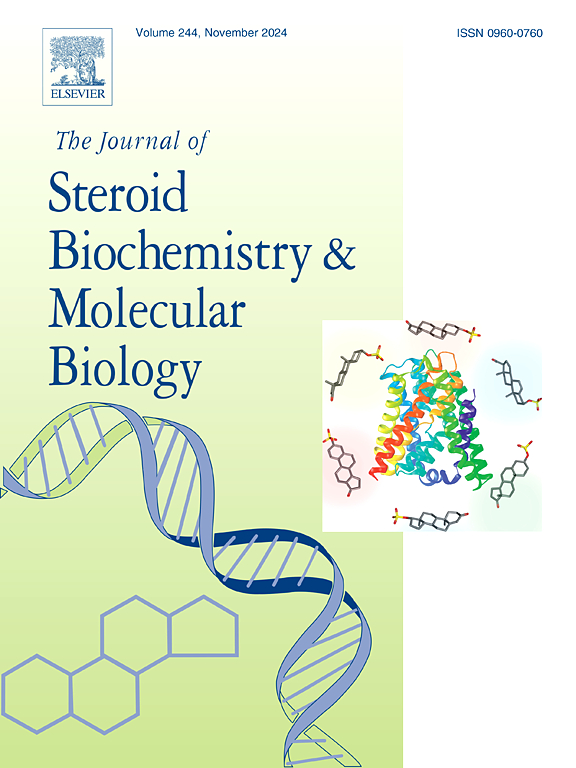溃疡性结肠炎胆固醇稳态相关基因的鉴定及其潜在的发病机制
IF 2.5
2区 生物学
Q3 BIOCHEMISTRY & MOLECULAR BIOLOGY
Journal of Steroid Biochemistry and Molecular Biology
Pub Date : 2025-07-09
DOI:10.1016/j.jsbmb.2025.106833
引用次数: 0
摘要
背景与目的胆固醇代谢(CM)在人类疾病中起着重要作用。溃疡性结肠炎(UC)是一种慢性炎症性肠病,具有显著的发病率和医疗负担。然而,CM在UC中的作用仍不清楚。方法检索UC患者和对照样本GSE75214、GSE92415、GSE16879和GSE48958基因表达数据并进行合并。对胆固醇稳态相关的差异表达基因(DEGs)进行差异分析,然后对胆固醇稳态相关的中心DEGs进行机器学习。鉴定出5个胆固醇稳态相关基因。我们进一步评估了5个枢纽基因的相关通路。结果通过DEGs分析鉴定出5个重叠的胆固醇稳态相关基因。中心基因为LIPC、LIPG、CETP、ABCB11和APOH。结论本研究发现5个胆固醇稳态相关基因LIPC、LIPG、CETP、ABCB11和APOH可能在UC的发生发展中起关键作用。这些发现为进一步探索UC及其潜在机制提供了新的见解。本文章由计算机程序翻译,如有差异,请以英文原文为准。
Identification of cholesterol homeostasis related genes and potential pathogenesis mechanisms in ulcerative colitis
Background and aims
Cholesterol metabolism (CM) plays essential roles in human disease. Ulcerative colitis (UC) is a chronic inflammatory bowel disease associated with significant morbidity and healthcare burden. However, the role of CM in UC remains unclear.
Methods
Gene expression data of UC patients and control samples were retrieved and merged from GSE75214, GSE92415, GSE16879, and GSE48958. Differential analysis was performed for the identification of cholesterol homeostasis-related differentially expressed genes (DEGs), followed by machine learning for cholesterol homeostasis-related hub DEGs. Five cholesterol homeostasis related genes were identified. We further assessed the related pathways of 5 hub genes.
Results
Five overlapped cholesterol homeostasis related genes were identified by DEGs analysis. LIPC, LIPG, CETP, ABCB11, and APOH were identified as hub genes.
Conclusions
The current study identified 5 cholesterol homeostasis related genes, LIPC, LIPG, CETP, ABCB11, and APOH, that might play key roles in the development of UC. These findings offer new insights for further exploring UC and its underlying mechanisms.
求助全文
通过发布文献求助,成功后即可免费获取论文全文。
去求助
来源期刊
CiteScore
8.60
自引率
2.40%
发文量
113
审稿时长
46 days
期刊介绍:
The Journal of Steroid Biochemistry and Molecular Biology is devoted to new experimental and theoretical developments in areas related to steroids including vitamin D, lipids and their metabolomics. The Journal publishes a variety of contributions, including original articles, general and focused reviews, and rapid communications (brief articles of particular interest and clear novelty). Selected cutting-edge topics will be addressed in Special Issues managed by Guest Editors. Special Issues will contain both commissioned reviews and original research papers to provide comprehensive coverage of specific topics, and all submissions will undergo rigorous peer-review prior to publication.

 求助内容:
求助内容: 应助结果提醒方式:
应助结果提醒方式:


